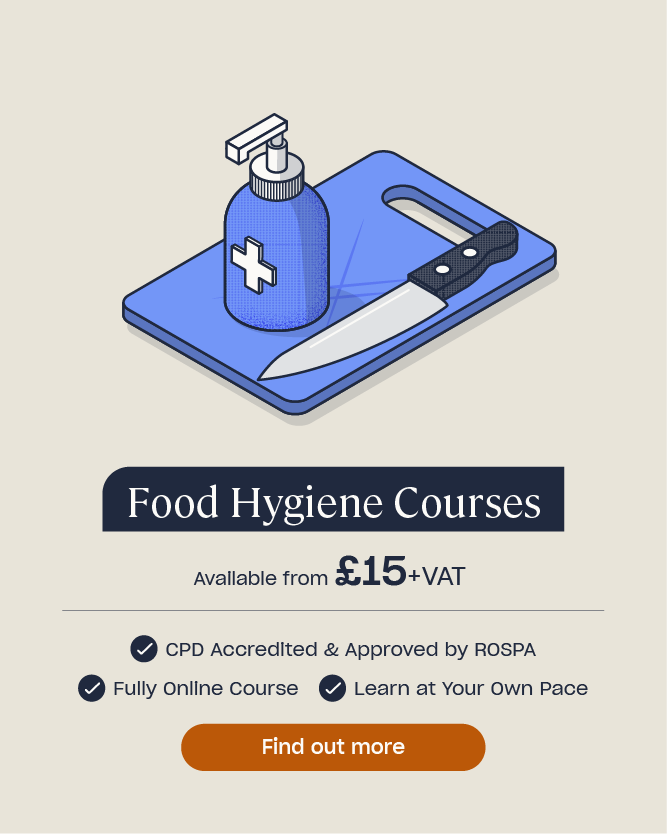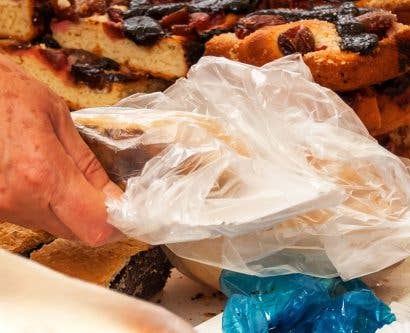Physical Hazards in Food
Everyone working in the food and drink industry, particularly those that handle and prepare food, must recognise the risks that physical food safety hazards pose to consumers. Physical hazards are common when food products are being manufactured, cooked or baked. As a food handler, you need to recognise where physical hazards might come from and how to prevent them from entering food. In this article, we’ll look at what physical hazards in food are, give some examples of physical hazards in food and help you to understand why managing them is so important.
What are Physical Hazards in Food?
Physical hazards in food are a type of contaminant, also known as extraneous matter, that can make food unsafe and unsuitable for consumption.
Physical hazards are any type of foreign object found in food that shouldn’t be there and they can cause serious harm or injury, such as choking, cuts to the mouth and throat or broken teeth.
Alongside physical hazards in food, the other types of hazard that make food unsafe to eat are chemical hazards and microbiological hazards (which cause food poisoning).

Examples of Physical Hazards in Food
Physical hazards in food fall into six categories known as the ‘6 Ps’. These six categories are the most common sources of physical contamination in the food industry: people, packaging, product, pests, premises and plant.
Examples of physical hazards in food under the 6 Ps categories are as follows:
- People – for example, hair, fingernails, plasters and bandages, jewellery, disposable gloves and hairnets.
- Packaging – for example, shards of glass, wood splinters, plastic bags, ceramic fragments or bits of textiles.
- Product – for example, soil and mud on vegetables, stones from harvesting, fishbones, chicken bones, fruit pips, eggshells and nut shells.
- Pests – for example, insects, rodents, droppings, feathers, claws and fur.
- Premises – for example, any item used on the food production premises, such as cooking utensils, food thermometers, staples, noticeboard pins and pens.
- Plant – for example, anything part of the machinery used for food manufacture, such as nuts and bolts, light bulbs, batteries, wire and flakes of paint.
Want to Learn More?
If you work in the food and drink industry, whether you manufacture, cook, bake or serve, then having knowledge of food safety procedures is essential. Take a look at our full range of Food Hygiene Courses and find the one that’s right for you.
How to Prevent Physical Hazards in Food
Preventing physical hazards in food shouldn’t be difficult if you always follow the correct food handling and food hygiene procedures. Often, preventing physical hazards just means paying more attention to the equipment you’re using, your personal hygiene and the cleanliness of the workplace. Just simple awareness can make a big difference.
To prevent physical hazards in food, you should:
- Keep your fingernails short, filed, clean and neat. Do not wear nail polish or false nails and remember to clean any dirt from underneath your fingernails.
- Do not wear jewellery when handling food, including wristwatches, rings, bracelets, necklaces and earrings.
- Cover your hair and facial hair fully with a hat, hairnet and beard net.
- Wear the required protective clothing at all times.
- Wash your hands thoroughly and regularly to remove any loose dirt.
- Replace any worn or damaged cooking utensils, equipment and servingware, especially if it’s chipped, cracked or splintering.
- Report any worn or damaged equipment or machinery as soon as you notice it.
- Wash all fruits, salads and vegetables thoroughly before use.
- Ensure your premises has a pest control policy and the procedures in it are followed and systems maintained.
- Keep all food packaging away from the food preparation area. Unpackage foods in a separate room and dispose of packaging outside.

If you’re the manager of a food premises, then you’ll have a HACCP plan in place which ensures all food safety risks have been identified and managed, including physical hazards. Read more about the 7 Principles of HACCP or take a look at our HACCP FAQs for more information on creating a HACCP plan.
If you work in food manufacturing, then our article on Improving Quality Control will also be useful to you.
Further Resources:
- Food Hygiene Courses
- Why is Food Hygiene Training Important?
- Promoting a Food Safety Culture: Free Assessment Guide











